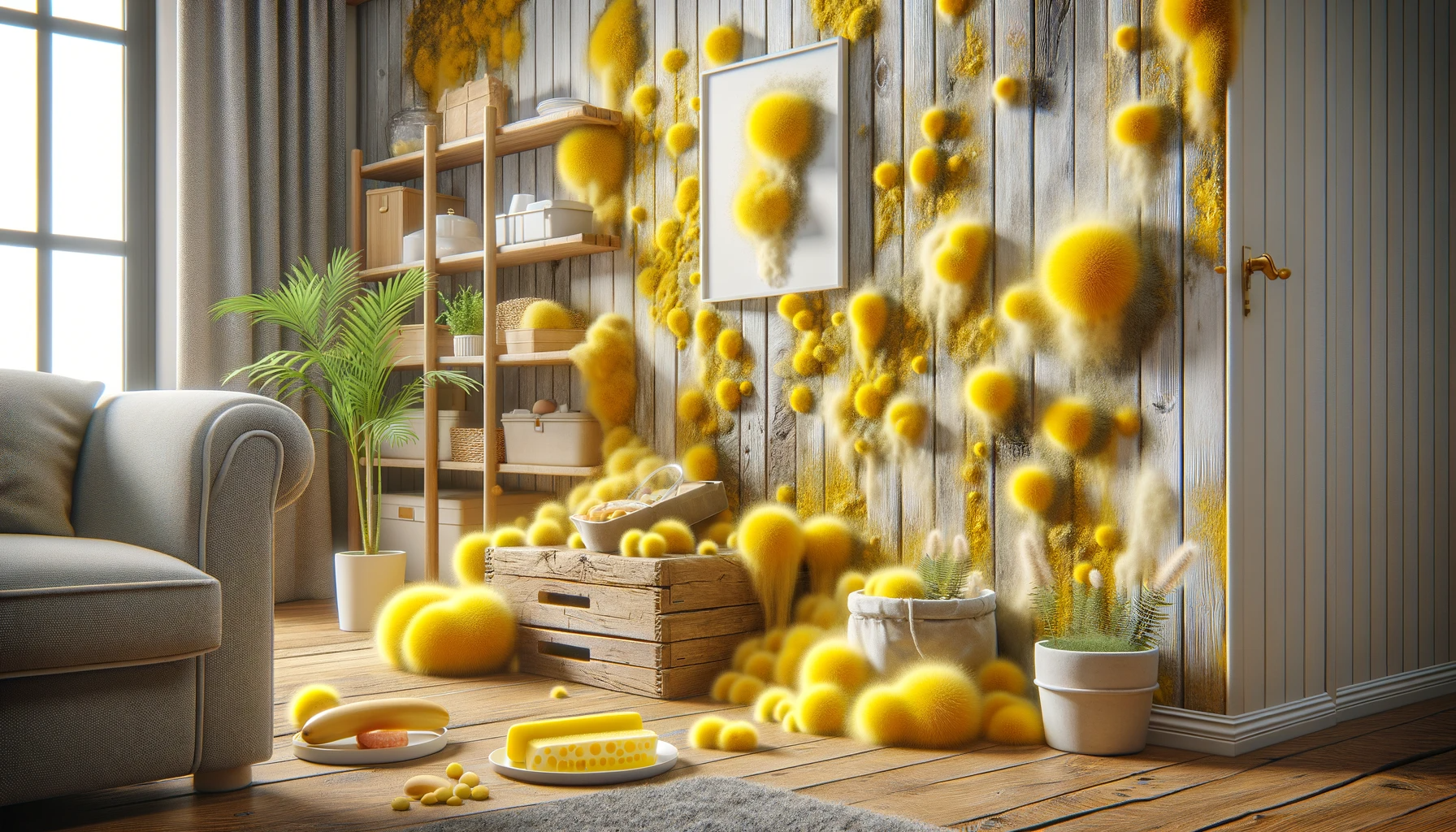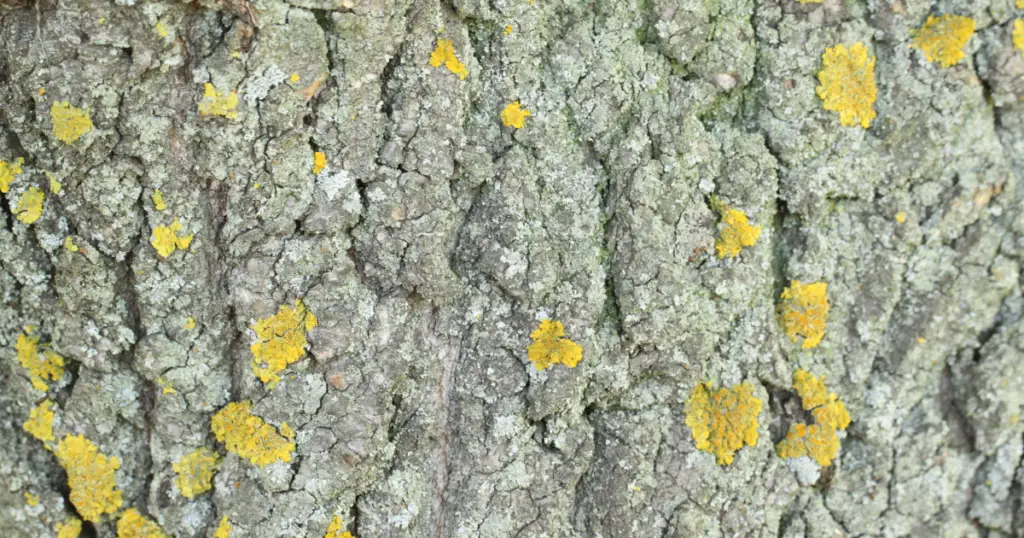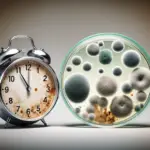Yellow mold is a species of fungus that thrives in moist and damp environments. From wood surfaces to bathroom tiles, yellow mold has been known to sprout on almost any object. Although yellow mold may not be as common in a building as other forms of mold, it has been known to thrive outdoors and can even appear in your garden.
It has the potential to cause serious health issues and should never be taken lightly. In this article, we will take a closer look at yellow mold and discuss how to identify it, what effects it can have on our health, and how to get rid of it safely. Whether you’ve noticed an area of yellow mold in your home or are just wanting to learn more about it, this article will provide you with all the information you need.
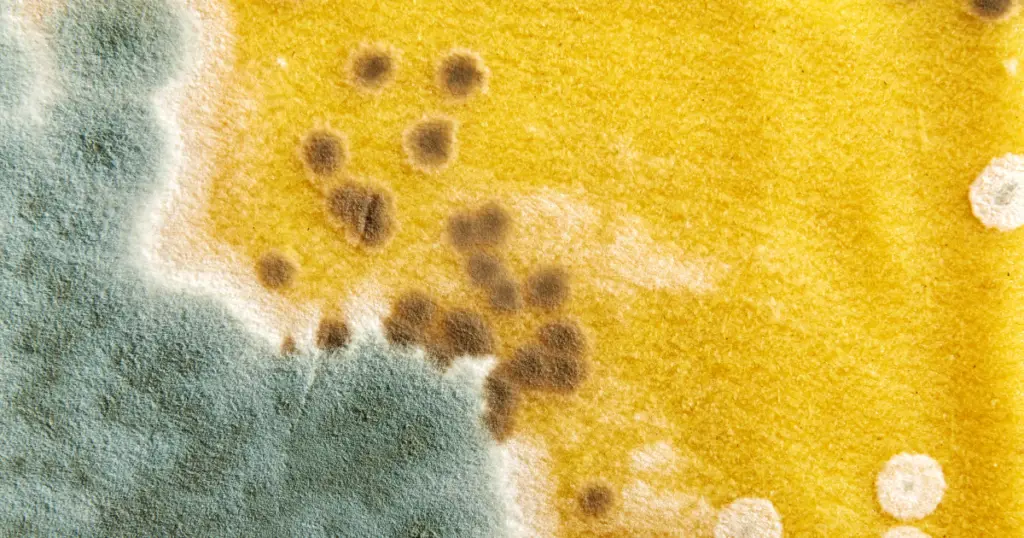
What is yellow mold?
Yellow mold is a type of slime mold that is often found in damp areas. It grows on organic materials such as wood, paper, cardboard, and even some household surfaces. Yellow mold can be identified by its characteristic yellow or greenish color and can rapidly spread with some strains growing up to an inch per day.
There are numerous species of yellow mold, some of which can be toxic and cause serious damage to wooden structures. It’s not hard to notice the presence of this bright-colored fungus since it stands out from the rest. That being said, certain types may seem almost white or have a tinge thereof – making identification even harder for non-experts.
If you have noticed any yellow mold growing in your home, it is important to take the necessary steps to identify the source of the problem and get rid of the mold safely before it causes any more harm.
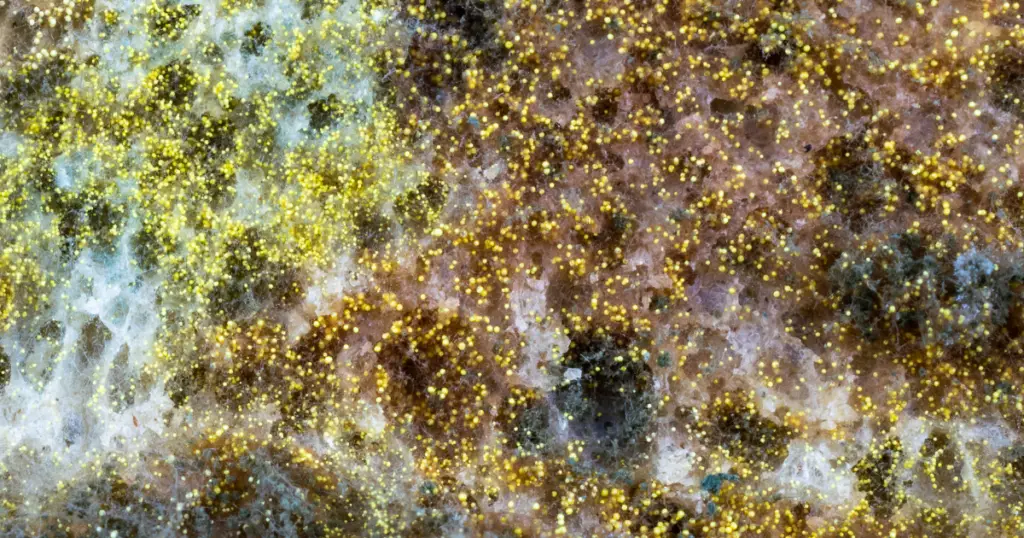
What are Mold Spores?
Mold spores are microscopic organisms that are found almost everywhere in the environment. They are typically invisible to the human eye and can exist in both dry and wet conditions. Mold spores can cause a variety of health problems if they become airborne, and once inhaled, can settle into places like carpets and furniture to form mold colonies. Exposure to mold spores over a long period has been linked to respiratory illnesses, allergies, and other health problems.
Mold spores cause mold growth on wooden surfaces and are often toxic, as they release mycotoxins that can lead to various illnesses associated with mold exposure. There are numerous types of mold, and the presence of high levels of mold spores in an area can quickly become a problem. It is important to identify and address any potential issues related to mold to reduce the risk of contamination from toxic substances.
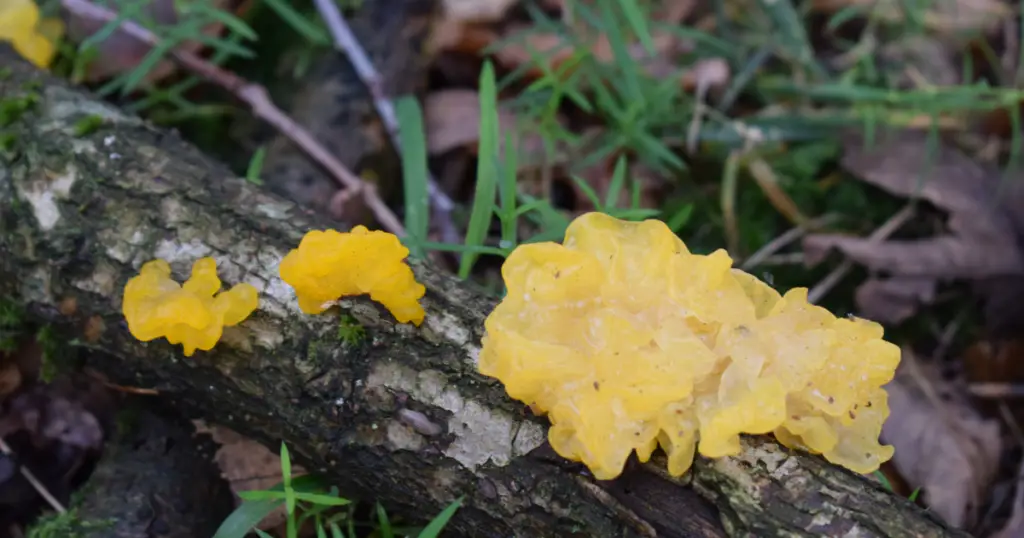
How to Identify yellow mold & How does it look like?
If you have discovered yellow mold in your home, you may have a household mold problem. It thrives in high humidity conditions and can propagate quickly if not adequately controlled. Vividly yellow or with more subtle coloration, mold can come in an array of shades.
Certain species may appear as patches of fuzzy dust, while slime mold is distinguished by its slippery consistency and bright hue. No matter the shape or shade, it’s clear that these organisms take on a unique yellow appearance.
To identify the yellow mold, first look for patches with a yellow hue on walls, ceilings or other surfaces such as damp materials in basements or other areas of your home. Additionally, there may be a musty odor present that could signal the growth of mold.
To confirm the presence of mold, you can opt to conduct testing using professional services and laboratory analysis. Once identified, it is important to take appropriate steps to address the issue.
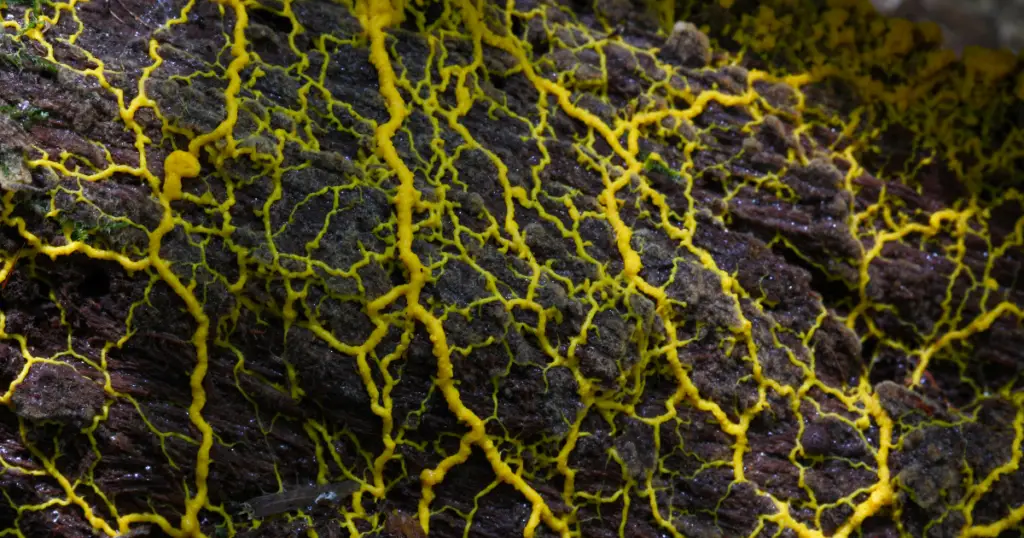
What is Yellow slime mold?
Slime molds are a type of fungus that inhabit damp environments such as forest floors. It takes on different appearances depending on the species, but they all share the same basic characteristics. Typically, they come in bright colors like yellow, orange, or white and can generally look slimy or wet to the touch. They can reproduce both sexually and asexually and are found in a variety of different habitats throughout the world. Additionally, they have been studied for their ability to adapt over time, making them interesting to researchers who study adaptation among species.
Slime molds, a collection of nearly 900 species that varies in color but often appears yellow, are not strictly fungi. Instead, they comprise single-celled organisms with an unusual texture – soft and liquidy. Unlike multi-cellular mold varieties, slime molds lack the tissue structure and conventional mold qualities we’re used to seeing.
They are a natural occurrence, often observed in soil and on the ground outside. Additionally, you may find yellow slime mold near your home; they can typically be spotted within mulch or even around areas collecting leaves such as eaves troughs. If water is left inside an air conditioner unit for long enough without proper drainage, it will appear there too.
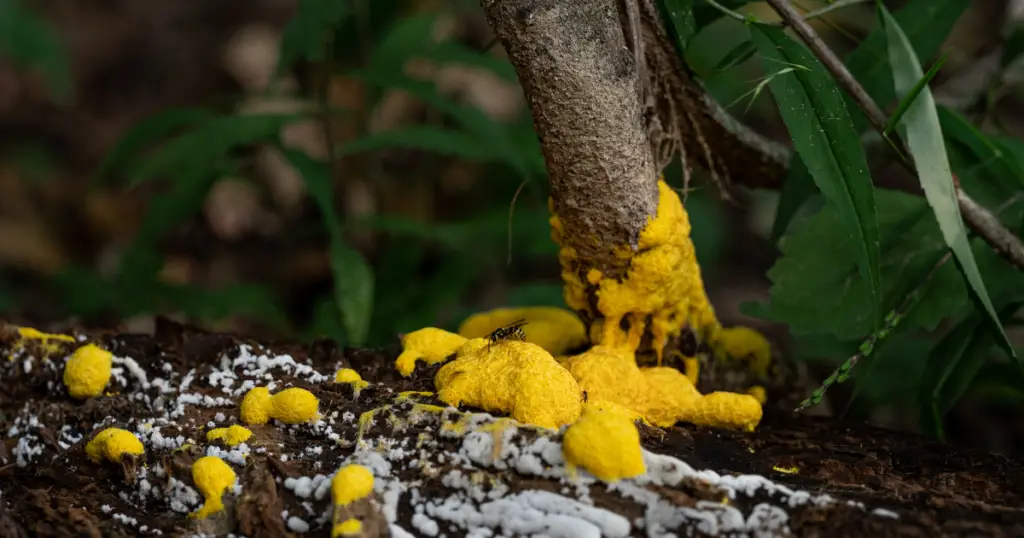
What types of mold are yellow?
In addition to slime mold, several other yellow molds can be seen around the home. You may recognize them by their distinctively yellow patches and musty smell; however, not all types of mold have a yellow appearance.
From bright yellow to faint shades of gold, here is a list of some of the most common molds you might encounter:
Aspergillus
Warm, humid conditions are ideal breeding grounds for Aspergillus, a very common household mold, which typically appears yellow in hue. This particular type of fungus flourishes on paper and cardboard surfaces. Several of these species can trigger allergies, and respiratory disease or generate poisonous mycotoxins that can cause an array of allergic reactions and be hazardous to touch or breathe in.
Cladosporium
Cladosporium is a type of yellow mold that can be found in both indoor and outdoor environments. This specie of mold is also one of the most common types of yellow mold and during its growth phase though it mostly presents as white mold and is known for its ability to spread quickly. Fortunately, when it’s in its yellow phase it may still be on the surface and easier to clean.
Serpula lacrymans
Serpula lacrymans, otherwise known as “house-eating mold,” is a type of fungus that spreads quickly on wood and can cause extensive damage – commonly referred to as dry rot.
Mucor
Mucor is an invasive mold that changes from a yellow hue to grey as it rapidly multiplies. If left untreated, this fungal infection can spread throughout the body, penetrating organs such as the sinuses, lungs and even brain tissue.
Geomyces pannorum
Geomyces pannorum is a mold common in the Northern Hemisphere that has the unusual feature of preferring colder climates, whereas most other molds prefer warmer temperatures. It can be found on various household surfaces, such as wood, walls, flooring, and even paper.
Epicoccum nigrum
Epicoccum nigrum is an incredibly adaptable mold, not only capable of changing its hue to yellow, orange and brown but also growing on a variety of surfaces: from wooden planks to drywalls, carpets or mattresses -even painted areas are vulnerable.
What color mold is most dangerous?
Different types of mold come in a variety of colors, ranging from white to black and even yellow. While the color of mold is not necessarily an indication of its level of danger, it is important to note that some molds are more hazardous than others.
Black mold, for example, can be particularly hazardous if left untreated and can cause severe respiratory issues as well as headaches and nosebleeds. Yellow mold can also be dangerous if not addressed properly, especially since the spores released from this species are often able to spread quickly and cause extensive damage.
Overall, any type of mold can pose a risk to health if ignored or neglected, so it is important to take prompt action when identifying an infestation.
Where can you find yellow mold indoors?
Yellow mold can often be found in warm, humid areas around the home, such as bathrooms, basements and even air conditioning units. It is typically more easily spotted near visible moisture sources, such as leaking plumbing fixtures or condensation on windowsills and walls. It can also be found in upholstered furniture and carpets, as well as on wood surfaces if moisture is trapped there.
Yellow mold can be found in a variety of places; the most common are:
Food
Some food items, such as bread, cheese and fruits are particularly prone to yellow mold. Bread is not only a favorite food among humans but fungi as well due to its considerable nutritional content. Specifically, fermented bread are especially ideal for fungal growth and can easily become moldy when exposed to the proper conditions.
Aspergillum is one of the most common types of molds that grow on or even inside various kinds of bread which appears like a fluffy layer with many different hues instead of just one.
The unmistakable musty scent that often accompanies a large colony of mold can be detected when biting into a piece of bread gone bad. Bread is typically stored in dark and warm places, making it the optimal breeding ground for fungi and molds.
Outside the house
If you spot yellow mold near decaying vegetation, mulch or topsoil of your lawn and garden, beneath plants or around the roots – it’s likely to be yellow mold. Don’t overlook leaves cluttering up eaves troughs either as they can provide an ideal environment for its growth.
Walls
Inside walls frequently become prime real estate for mold to infest, particularly when the conditions are perfectly suitable. High levels of humidity, moisture issues, and a dearth of fresh air or sunlight all foster an environment where yellow mold can thrive.
Wood
Wood is an ideal breeding ground for yellow mold, especially when moisture remains trapped in the material. If you spot discolored patches around window frames and other wooden surfaces, there’s a chance that this could be yellow mold.
At first, yellow mold may be only visible as specks; but if left unchecked, it can transform into an unsightly slime coating that not only smells musty and unpleasant but also blemishes the structure.
Bathroom
One of the most common places yellow mold can be found indoors is in the bathroom, especially around showers or tubs. This area tends to be one of the dampest parts of the home and as a result, it offers prime opportunities for fungi and molds like yellow mold to flourish.
Be sure to check behind the shower curtain, and around the bathtub, as well as in any other areas where water accumulates.
Basement
Basements are particularly prone to yellow mold as they tend to be damp and have little ventilation, making them the perfect breeding ground for fungi and molds.
This type of mold can easily be identified by its strong odor and characteristic bright yellowish-green color. If you spot it in your basement, make sure to take appropriate action as soon as possible to prevent further infestations.

Is yellow mold toxic?
Yellow mold can be toxic, depending on the species. Yellow mold includes several different types of fungi, some of which are more hazardous than others. While most yellow molds only cause mild irritation, such as skin rashes or sneezing fits, others may produce mycotoxins that can damage the immune system and cause a range of serious illnesses.
Yellow toxic mold is a hazardous species that pose various health risks to those exposed to it for extended periods. This type of mold is particularly dangerous due to its ability to spread quickly and affect multiple areas within an environment.
When people are exposed to yellow toxic mold, they may experience respiratory issues such as difficulty breathing, chronic obstructive pulmonary disease (COPD), and other symptoms associated with mold-related illnesses.
In extreme cases, prolonged exposure can even damage the immune system and cause severe illness. Those who suspect they may have been exposed should seek professional help to determine the severity of their mold exposure and receive the necessary treatment.

Health Problems cause by Yellow Mold
Exposure to yellow mold can cause a range of health problems. Symptoms can vary in severity, from mild irritation to life-threatening infections. Commonly reported mold-related illnesses to include respiratory problems, skin rashes and irritation, fatigue, headaches, and allergic reactions.
More serious complications can include damage to the immune system and chronic conditions such as asthma and obstructive pulmonary disease.
How to Prevent Yellow Mold?
Preventing a mold problem in your home is essential to maintain the health of your family and property. Here are some tips on how to prevent mold:
- Reduce Indoor Humidity – Mold thrives in moist environments, so try to reduce indoor humidity levels. Use a dehumidifier if necessary.
- Repair Leaks Immediately – Even tiny leaks can create an ideal environment for mold growth, so make sure they are fixed as soon as possible.
- Clean Regularly – Vacuuming carpets and wiping down surfaces such as tiled walls or floors can help to eliminate potential areas for the growth of spores.
- Check for Condensation in Heating Ducts – Make sure that your heating and ventilation ducts are properly insulated and do not have condensation building up in them which could cause mold growth.
- Check Basement Walls for Discoloration – Inspect your basement regularly for any signs of discoloration on the walls which could indicate a potential mold problem.
- Consider Professional Services – If you suspect that there may be a serious problem with mold in your home, consider engaging professional services who specialize in identifying and treating mold-related issues
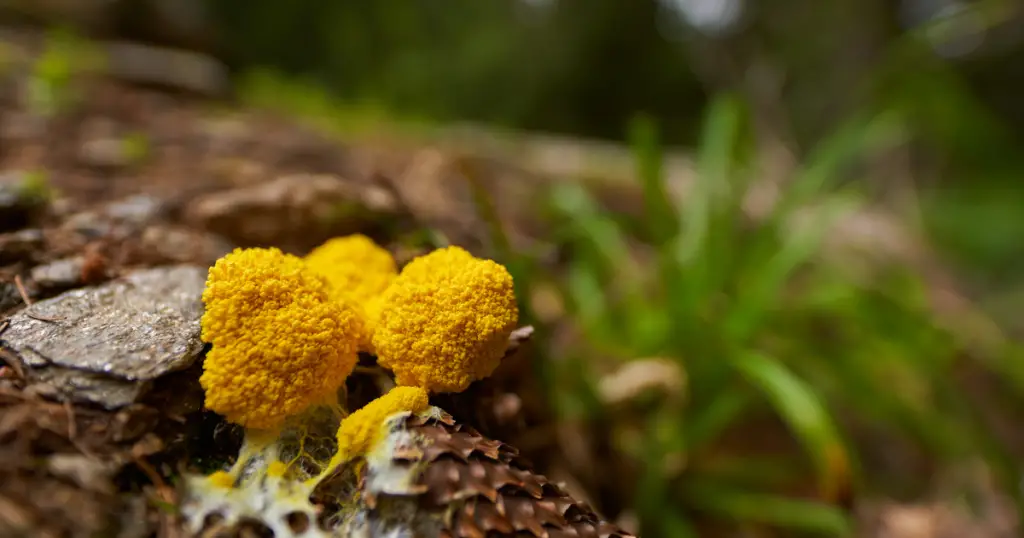
How do you get rid of yellow mold infestation?
If you find yellow mold in your household, you should take action as soon as possible to prevent further infestations. Here are some tips on yellow mold removal:
- Protective gear: Wear protective gear such as gloves, boots, and a face mask when dealing with yellow mold due to its potential danger.
- Dispose of any infected material: Carefully remove and discard any visibly infected material, such as drywall or furniture.
- Ventilate and dry the area: Open windows and doors to allow for proper air circulation in the affected area. Utilize a dehumidifier to quickly and efficiently dry the area that has been damaged by excess moisture.
- Warm water and detergent: Using warm water and detergent helps to break down the yellow mold and make it easier to remove.
- Bleach solution: Create a bleach solution by mixing one part bleach and three parts water in a spray bottle, this can be used to kill any remaining yellow mold.
- Regular cleaning: Make sure to clean regularly to prevent the buildup of yellow mold which can be dangerous if left untreated for too long.
- professional mold removal service: If you suspect that the mold may have spread to other parts of your home, or if it is too difficult for you to remove on your own, consider hiring a professional mold removal service. They will be able to identify and safely remove any dangerous mold from your home. Remember: Prevention is always better than cure when it comes to dealing with yellow mold.
Act quickly and seek the right help if you think that your home might be at risk. By taking these steps, you can keep your family safe from the yellow mold dangerous infestation and ensure that they don’t suffer any long-term health effects.
[/et_pb_text][/et_pb_column][/et_pb_row][/et_pb_section]

